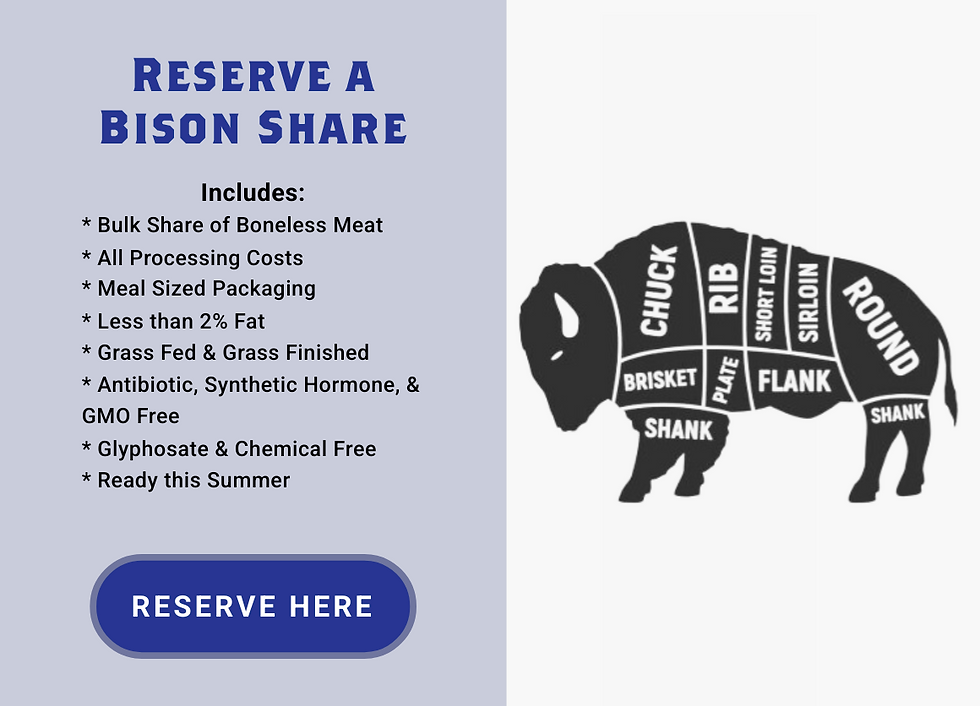How Many Hands Touch Your Food?
- Shane & Ibby Bridwell

- Mar 27
- 1 min read
Discover why a shorter meat supply chain means fresher, healthier bison meat.

The Hidden Risks of the Industrial Meat Supply Chain:
Most grocery store meat goes through a long, complex supply chain, increasing contamination risks and lowering quality. Most consumers don't realize how many steps—and risks—are involved before conventional meat reaches their plate.
Here's an Overview:
❌ Factory farms: Overcrowded, antibiotic, synthetic hormone-laden animals
❌ Multiple handlers: Auctions, brokers, and transport stresses the animals
❌ CAFOs & Slaughterhouses: Grain-fed, unhealthy livestock processed in bulk from many sources
❌ Mixed meat: Multiple animals, different production methods, farms, and countries—lack of transparency
❌ Storage delays: Lowers freshness and degrades nutrients. Meat can be stored and shipped multiple times before reaching retailers, increasing exposure to temperature fluctuations and bacteria.
❌ Multiple food-service hands: Passing through grocery stores and restaurants before reaching your plate, where meat has likely been touched by numerous workers.
The Bluestem Bison Difference
We eliminate these risks with a vertically integrated, simplified and more transparent supply chain:
✅ Pasture-Raised – No factory farms, no feedlots, no grain
✅ No Middlemen – Bison stay in our care from start to finish
✅ Field-Harvested – Humane harvest for lowest stress, superior quality
✅ Private Processing – Precision handling, no mass cross-contamination
✅ Direct-to-Consumer – Fresh and frozen, nutrient-dense meat delivered directly to you
Why It Matters:
✔️ Safer, cleaner meat with fewer touchpoints
✔️ 100% traceability—know your source
✔️ Superior taste and nutrition
Your Health and Your Family Deserve the Best Meat:
🔷 Ethically Raised
🔷 Ethically Sourced
🔷 Humanely Harvested
🔷 Privately Processed





Comments